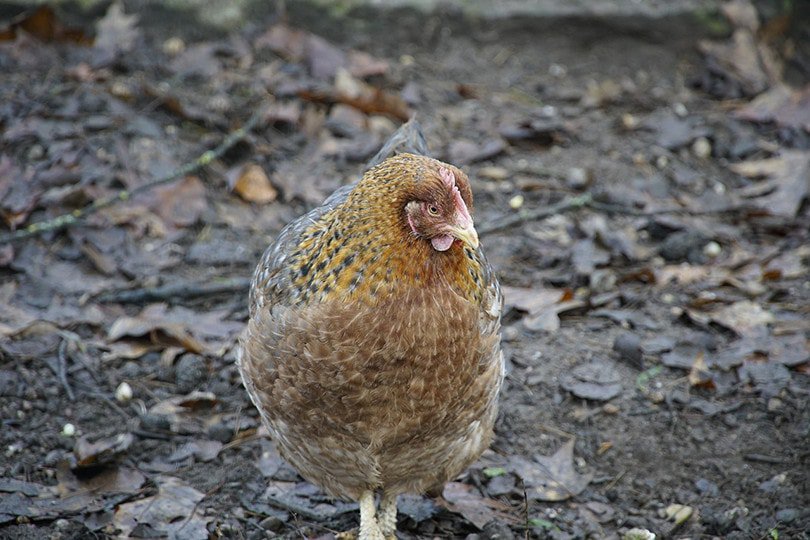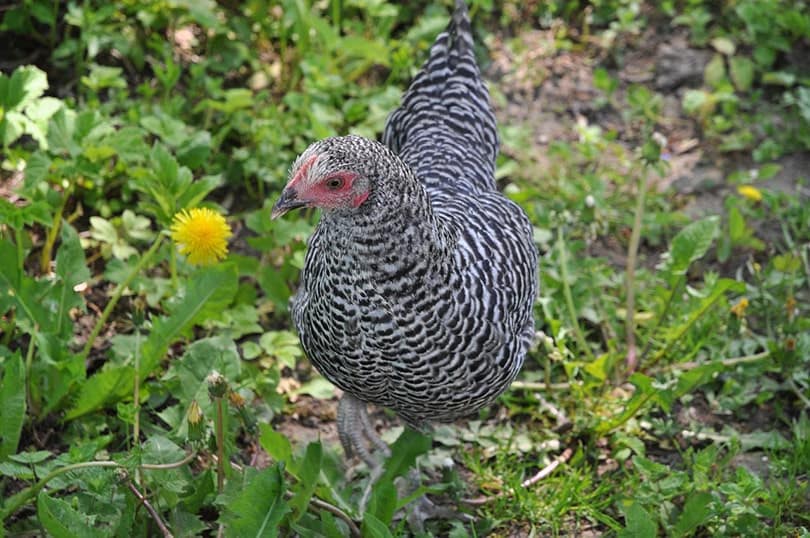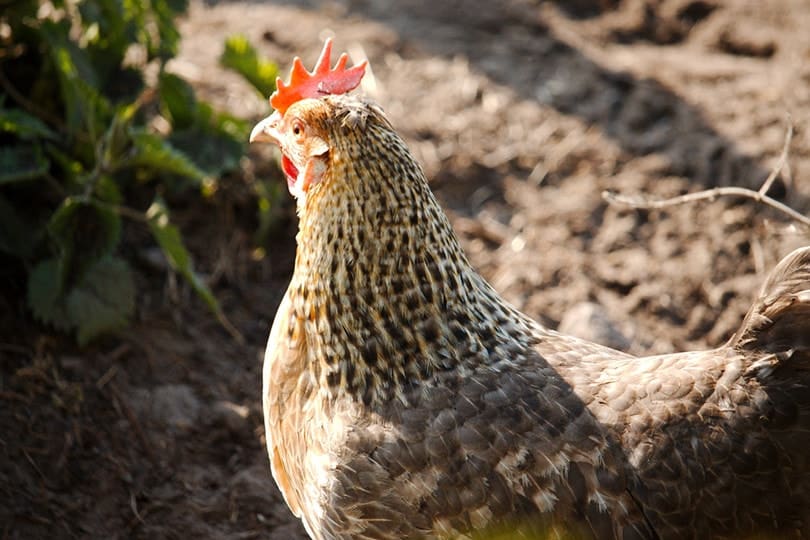The Dominique is great for chicken newbies and veterans. This chicken breed is the oldest in America and one of the hardiest breeds you can find. The Dominique chicken had to survive early colonization, so it’s as tough as nails but gentle with people. Keep reading to learn more about this incredible poultry breed and if it’s right for you.

Quick Facts About the Dominique Chicken
| Breed Name: | Dominique |
| Other Names: | Pilgrim Fowl, Dominicker, Old Gray Hen, Blue Spotted Hen |
| Place of Origin: | Europe (exact location unknown) |
| Uses: | Eggs, meat, feathers |
| Rooster (Male) Size: | 7 pounds |
| Hen (Female) Size: | 5 pounds |
| Color: | Black and white |
| Lifespan: | 8+ years |
| Climate Tolerance: | Adaptable to any climate |
| Care Level: | Easy |
| Production: | 230–275 eggs per year |
| Egg Color: | Light brown |
| Egg Size: | Medium |
| Rarity: | Vulnerable |
Dominique Origins
Also known as the Pilgrim Fowl, the Dominique breed was brought to America in the 1750s and helped early colonists through the rough beginning of colonization. We don’t know the exact origin of the Dominique chicken before coming to America, but it’s believed to be a mix of European and Asian poultry breeds.
The Dominique breed goes by many names, one of which is the Dominicker. This name comes from the belief that the breed originated in the French colony of St. Dominique (Haiti).

Dominique Characteristics
The Dominique chicken is a sweet, gentle chicken that always holds its composure around humans. Their friendly nature and resiliency make them great for first-time chicken keepers and family coops. Because of their calm nature, Dominique hens make great show animals for kids in 4H.
Although they are docile, these animals prefer not to be handled, so don’t expect them to be lap chickens. They will run away if chased by children but soon relax if humans are calm around them. The roosters can be aggressive around mating season but are still friendly by nature. It’s best to pair this chicken breed with other docile breeds.
The Dominique hen can be broody. The hens have excellent maternal instincts with a high success of hatching chicks. The chicks are also easy to sex. Many Dominique enthusiasts attribute the maternal impulse to their survival instincts from colonial times.
As we mentioned before, the Dominique breed is one of the hardiest chickens. It forages well and can withstand different climates. Their rose combs make them suited for cold temperatures and able to withstand frostbite. Because of their superb foraging instincts, they prefer to roam freely but will do fine in a coop.
Uses
Dominique hens have been dual-purpose hens used for their eggs, meat, and feathers since the 1820s. They lay light-brown eggs and can produce between 230–275 medium-sized eggs per year. Hens start laying eggs around 21–24 weeks old.
Unfortunately, inbreeding has caused the Dominique hen’s egg to shrink, but efforts are being taken to improve this.
The Dominique hen is also used for meat, although they’re better for egg production. The hens can be on the small side. However, roosters are larger and can be used for meat.

Appearance & Varieties
Many people have trouble discerning the Dominique chicken from the Barred Rock. If you’re ever confused, just look at the chicken’s comb. Dominiques have a rose comb, whereas Barred Rocks have a straight comb.
Dominiques also have a crisp, black and white color with high contrast. The coloring alone helps them appear less conspicuous to predators. This breed has a full, round breast and holds its head high.
The Dominique has a short, yellow-horned beak. The tail is at a 45-degree angle, and the wings are large and folded in. The legs are short and stout and have four toes on each foot.
Before 1870, no written standards existed for the breed. Many Dominiques were mistaken for Barred Rocks and vice versa. In 1870, the New York Poultry Society set the standards for the breed, particularly the standard of the rose comb. All single-combed chicks were grouped into the Plymouth Rock breeds like the Barred Rock.
Population
The Dominique has had eras of popularity and has also been near extinction. The first population decline started in the 1920s during WWI and the Great Depression. Before then, the breed was quite popular, but all the Dominique enthusiasts began passing away. However, small farms kept the Dominique chicken for its hardiness and foraging abilities.
The breed regained its popularity around 1970, after nearly going extinct. As a result, only four flocks existed in the entire US. The American Livestock Breed Conservancy worked with the flock owners to save the breed.
In 2007, the numbers started dropping again, but the population will hopefully begin to rise again thanks to the growing interest in raising backyard chickens.

Are Dominiques Good for Small-Scale Farming?
Dominiques are an excellent option for small-scale farming. One of the reasons they are not used in commercial agriculture is because their egg count doesn’t match the demand. However, their egg production is perfect for a small farm or backyard homestead.
Most people use this breed for their eggs, but it’s considered a dual-purpose breed. The Dominique is also a great option for shows and 4H if you have children.
Ultimately, this breed can work for chicken keepers of all experience levels. It’s a beautiful bird to care for, and they love their humans once they feel comfortable.
Other bird reads:
Featured Image Credit: Simon J Beer, Shutterstock
